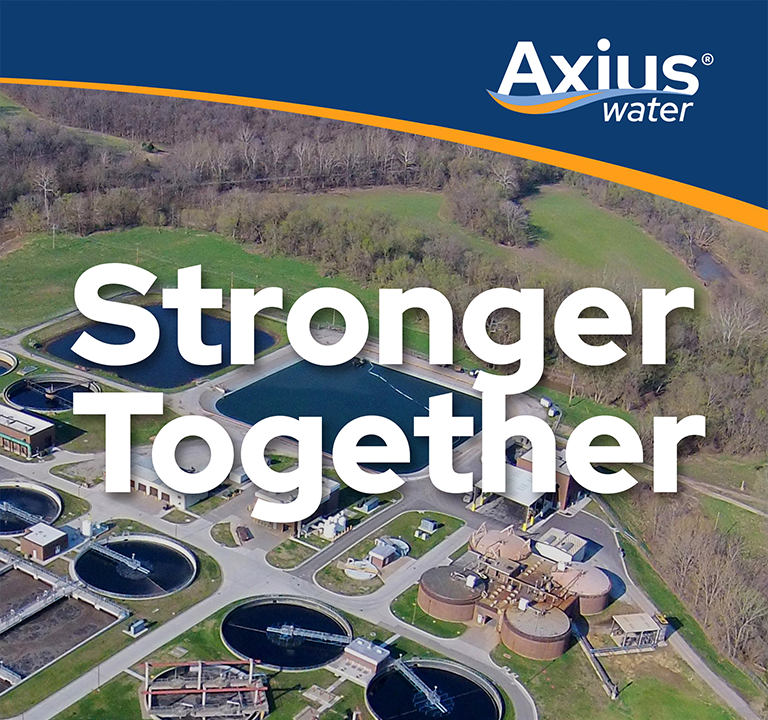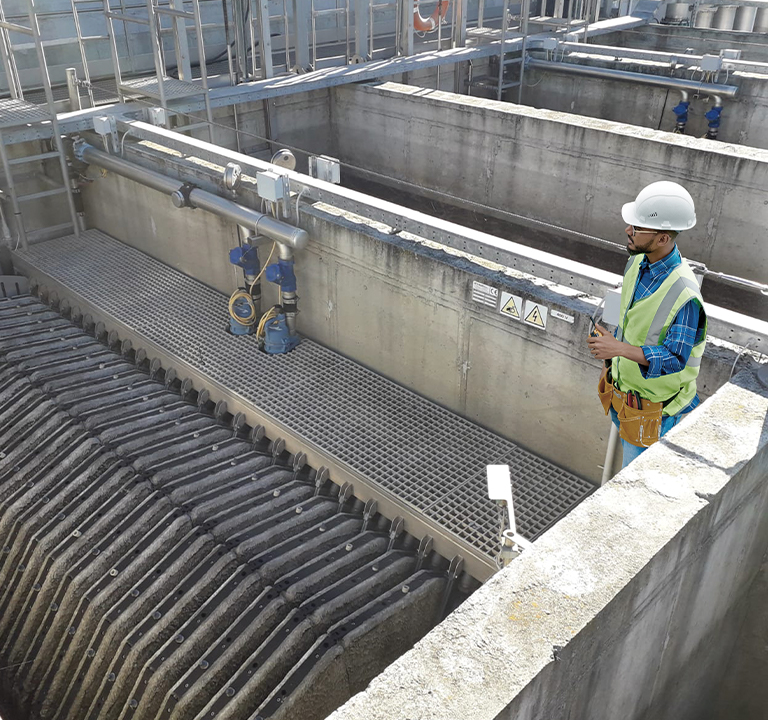In the shadows of Mt. Ranier and the western edge of the Rocky Mountains, Puget Sound boasts hundreds of islands and extends nearly 100 miles from its northern- and southern-most points. Given the setting, it’s no wonder it is considered one of the most picturesque waterways in the western United States. It’s also no wonder that any wastewater treatment plant that discharges into Puget Sound must adhere to strict discharge requirements, to minimize pollution in the Sound’s waters.
The Issue at Hand
Wastewater treatment plants around the globe play a critical role in minimizing nutrient release into our waterways. Naturally occurring nutrients (primarily nitrogen and phosphorus) at normal, balanced levels in streams, rivers and other bodies of water are healthy, as they support the growth of algae and aquatic plants. These plants in turn provide food and habitat for fish, shellfish, and smaller organisms that live in water. Too much nitrogen and phosphorus, however, creates what is referred to as nutrient pollution. Nutrient pollution can deteriorate water quality as algae can grow rapidly, reducing or even eliminating the oxygen supply and reducing the exposure to sunlight. This leads to habitat damage, loss of aquatic life, drinking water contaminated with toxins and bacteria, and ultimately negative impacts on human health.
One such wastewater treatment plant, which discharges into Puget Sound from Washington State (US), needed to maintain compliance with the amount of nitrogen from their effluent, minimizing the release of harmful nutrients. Operating seasonally – only seven months of the year – the plant had a daily average flow of 10.75 MGD (million gallons per day), and they were meeting their seasonal discharge requirements readily and consistently. The plant was using methanol as their supplemental carbon source. And in spite of their seven-month season, they were also needing to add methanol into their process year-round – even during their offseason – in order to maintain the necessary population of bacteria required for denitrification during their season.
Issues with Methanol
The Washington facility was facing a large capital investment with their current methanol-based process, and decided to explore less expensive and more environmentally friendly solution options. Identifying a solution that wouldn’t have to be administered year-round would also help the bottom line.
In spite of its “hazardous material” designation, methanol has been used for decades as a supplemental carbon source for denitrification in wastewater treatment plants. However, as a toxic and highly flammable chemical, methanol is dangerous for a treatment plant to store and use, and must adhere to strict OSHA certification and compliance to mitigate fire and environmental hazards. These precautions are expensive and add costs to any operation.
In the shadows of Mt. Ranier and the western edge of the Rocky Mountains, Puget Sound boasts hundreds of islands and extends nearly 100 miles from its northern- and southern-most points. Given the setting, it’s no wonder it is considered one of the most picturesque waterways in the western United States. It’s also no wonder that any wastewater treatment plant that discharges into Puget Sound must adhere to strict discharge requirements, to minimize pollution in the Sound’s waters.
The Issue at Hand
Wastewater treatment plants around the globe play a critical role in minimizing nutrient release into our waterways. Naturally occurring nutrients (primarily nitrogen and phosphorus) at normal, balanced levels in streams, rivers and other bodies of water are healthy, as they support the growth of algae and aquatic plants. These plants in turn provide food and habitat for fish, shellfish, and smaller organisms that live in water. Too much nitrogen and phosphorus, however, creates what is referred to as nutrient pollution. Nutrient pollution can deteriorate water quality as algae can grow rapidly, reducing or even eliminating the oxygen supply and reducing the exposure to sunlight. This leads to habitat damage, loss of aquatic life, drinking water contaminated with toxins and bacteria, and ultimately negative impacts on human health.
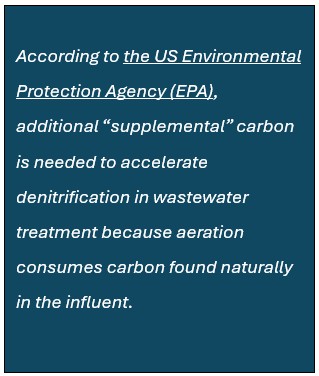
One such wastewater treatment plant, which discharges into Puget Sound from Washington State (US), needed to maintain compliance with the amount of nitrogen from their effluent, minimizing the release of harmful nutrients. Operating seasonally – only seven months of the year – the plant had a daily average flow of 10.75 MGD (million gallons per day), and they were meeting their seasonal discharge requirements readily and consistently. The plant was using methanol as their supplemental carbon source. And in spite of their seven-month season, they were also needing to add methanol into their process year-round – even during their offseason – in order to maintain the necessary population of bacteria required for denitrification during their season.
Issues with Methanol
The Washington facility was facing a large capital investment with their current methanol-based process, and decided to explore less expensive and more environmentally friendly solution options. Identifying a solution that wouldn’t have to be administered year-round would also help the bottom line.
In spite of its “hazardous material” designation, methanol has been used for decades as a supplemental carbon source for denitrification in wastewater treatment plants. However, as a toxic and highly flammable chemical, methanol is dangerous for a treatment plant to store and use, and must adhere to strict OSHA certification and compliance to mitigate fire and environmental hazards. These precautions are expensive and add costs to any operation.
Exploring Options
In order to maintain the low levels of nitrogen in their effluent, without the use of methanol, the facility decided to conduct an evaluation using MicroC® 2000 from EOSi as the supplemental carbon source. Eliminating methanol from their process altogether was the ideal solution – especially if they were also able to eliminate the required supplemental carbon maintenance dose during the offseason. The evaluation and assessment would be considered successful if the facility could achieve the daily average target in their effluent discharge.
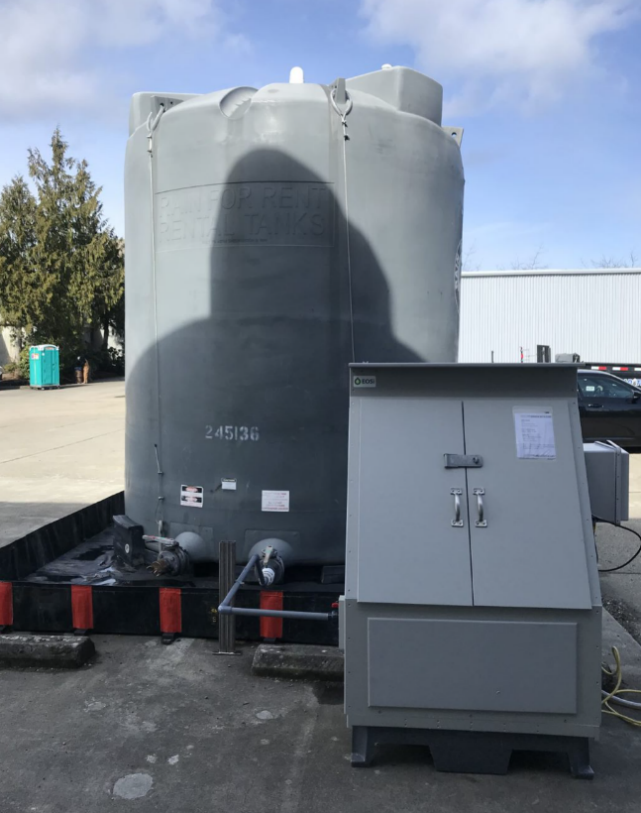
dosing equipment and a 6,900-gallon poly tank .
Target Reached
For the duration of the evaluation, a daily average nitrate concentration of 3 mg/L or less was consistently met, and the facility was able to eliminate their maintenance dose during the five-month offseason. The evaluation showed that MicroC® 2000, paired with a Nitrack® automation system, can match methanol performance.
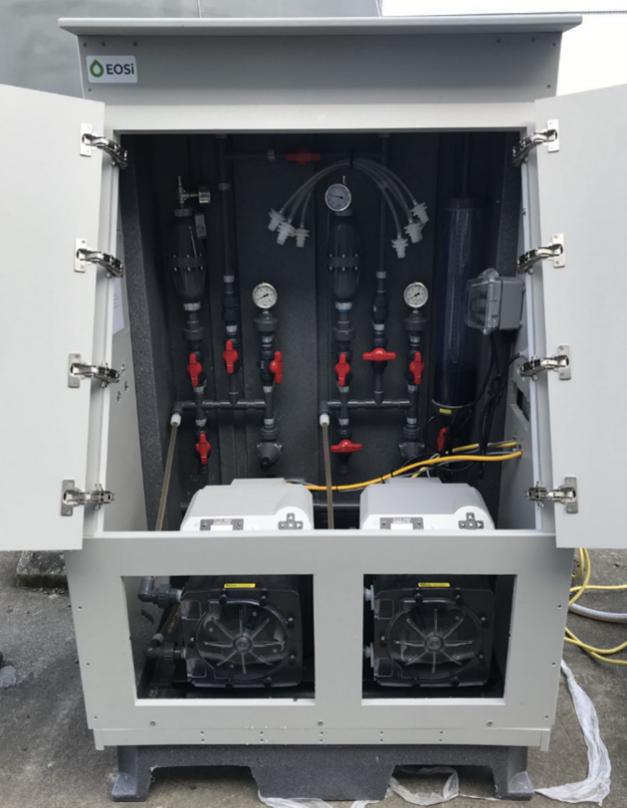
Given the positive results of the evaluation, the wastewater treatment plant decided to move forward with implementing a permanent system for MicroC® 2000. An added benefit to the customer is the fact that MicroC 2000, being produced from biogenic materials – verified by the USDA BioPreferred Program – can reduce carbon dioxide emissions emanating from the biological nutrient removal process by 80% to 90% as compared to methanol, ultimately helping them also reduce overall Scope 1 greenhouse gas emissions. Converting to the MicroC 2000 solution, the facility removed a hazardous chemical from the site, avoided costly upgrades to their existing methanol process, and eliminated the need for a maintenance dose during the offseason. All in all, it was a less expensive and more environmentally friendly solution, and they were able to meet their denitrification goals and minimize the impact of nutrient pollution in Puget Sound.
Click here for more information on the Puget Sound methanal conversion project.


